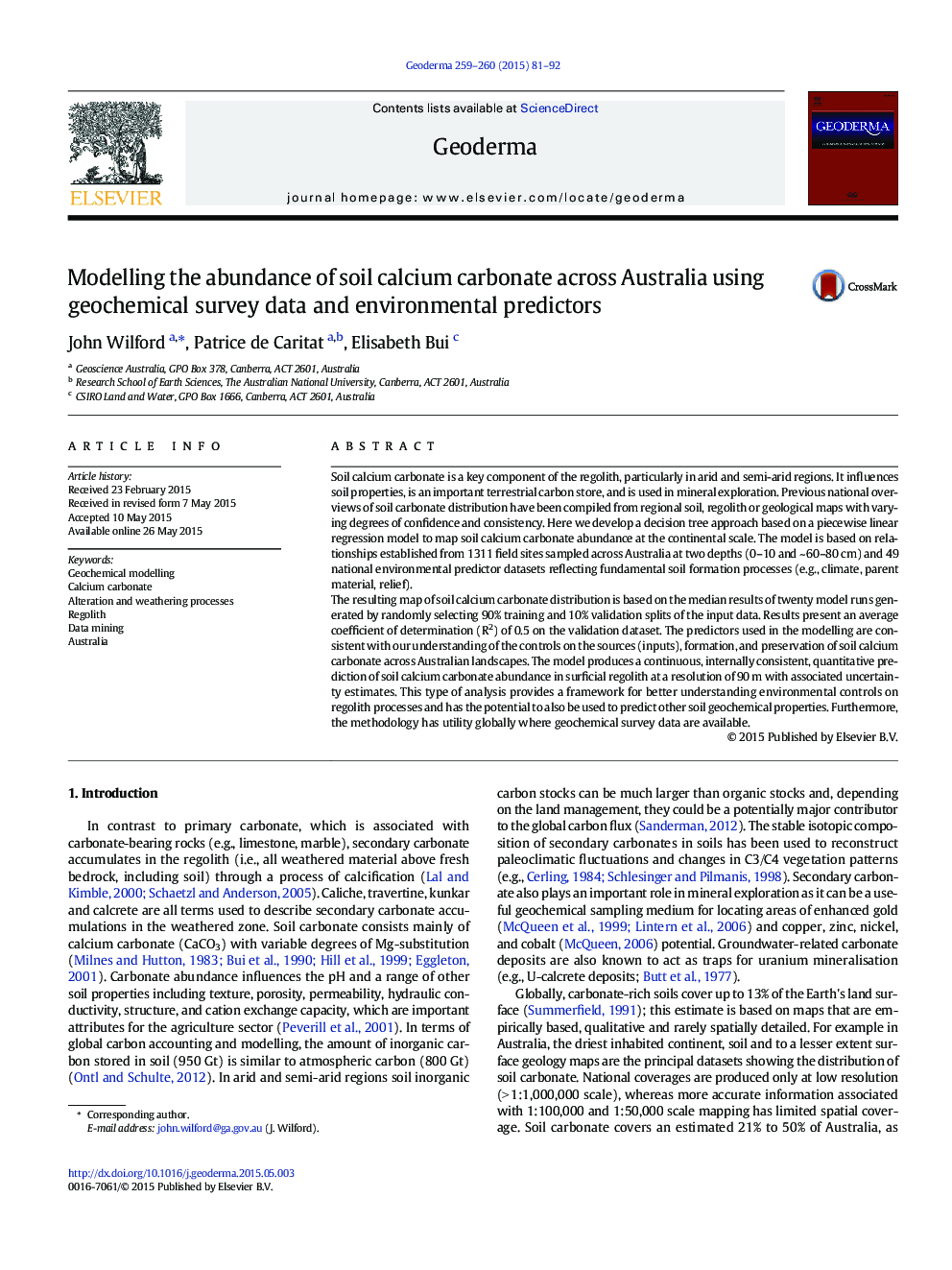| Article ID | Journal | Published Year | Pages | File Type |
|---|---|---|---|---|
| 6408503 | Geoderma | 2015 | 12 Pages |
â¢Soil calcium carbonate abundance (SCCA) was modelled from environmental datasets.â¢Model provides a continuous, internally consistent, quantitative SCCA prediction.â¢Provides insights into processes controlling SCCA across the Australian landscapeâ¢The approach has broad application in modelling geochemical survey data.
Soil calcium carbonate is a key component of the regolith, particularly in arid and semi-arid regions. It influences soil properties, is an important terrestrial carbon store, and is used in mineral exploration. Previous national overviews of soil carbonate distribution have been compiled from regional soil, regolith or geological maps with varying degrees of confidence and consistency. Here we develop a decision tree approach based on a piecewise linear regression model to map soil calcium carbonate abundance at the continental scale. The model is based on relationships established from 1311 field sites sampled across Australia at two depths (0-10 and ~Â 60-80Â cm) and 49 national environmental predictor datasets reflecting fundamental soil formation processes (e.g., climate, parent material, relief).The resulting map of soil calcium carbonate distribution is based on the median results of twenty model runs generated by randomly selecting 90% training and 10% validation splits of the input data. Results present an average coefficient of determination (R2) of 0.5 on the validation dataset. The predictors used in the modelling are consistent with our understanding of the controls on the sources (inputs), formation, and preservation of soil calcium carbonate across Australian landscapes. The model produces a continuous, internally consistent, quantitative prediction of soil calcium carbonate abundance in surficial regolith at a resolution of 90Â m with associated uncertainty estimates. This type of analysis provides a framework for better understanding environmental controls on regolith processes and has the potential to also be used to predict other soil geochemical properties. Furthermore, the methodology has utility globally where geochemical survey data are available.
